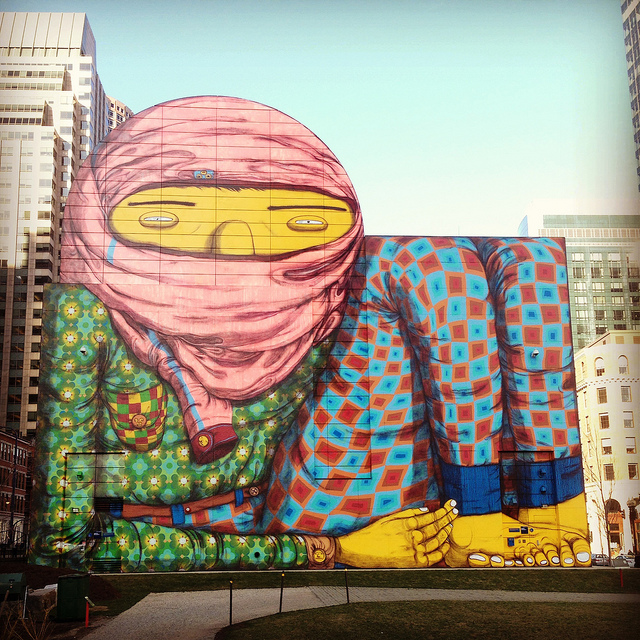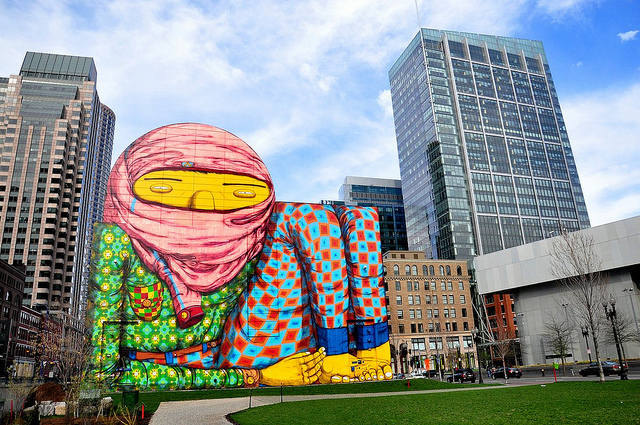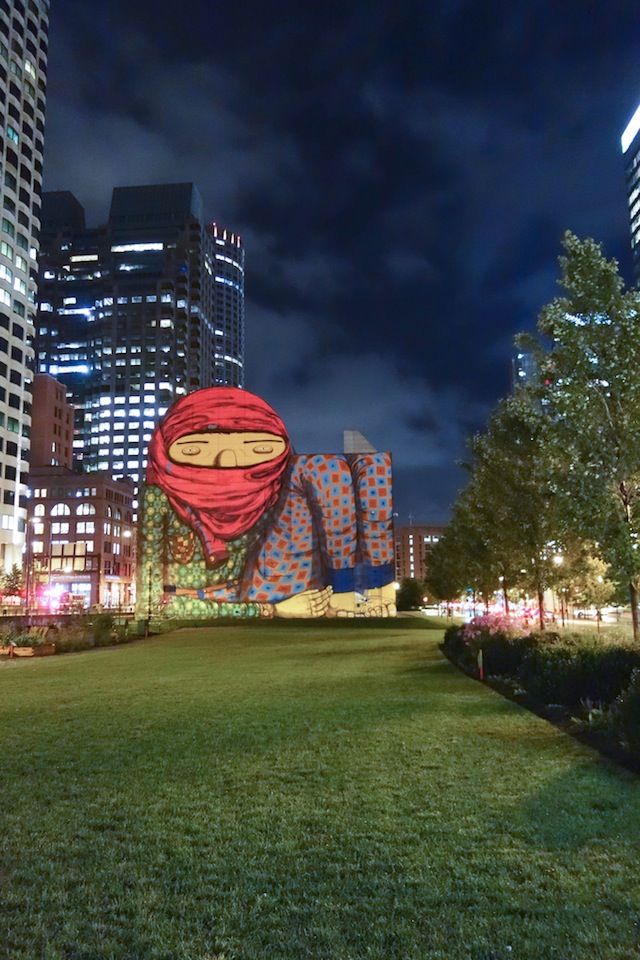A note from the editor: This is a guest post by Australian street artist CDH. Although I personally disagree with some of the conclusions CDH reaches in this post, I think it may be the start of a debate well-worth having, and it’s one that connects closely to my upcoming book, Viral Art. – RJ
Street art is primarily consumed as digital images online, rather than as paintings on walls in the physical world. Juggernaut sites like Street Art Utopia pump out new images each day to their million plus audience. Street art fans are likely to subscribe to multiple sites and so this audience encounters far more street art online, than on the streets. The street art fades away but the digital images live on, which makes them the primary cultural product that we engage with.
In many ways it’s very positive; I can view global works from locations I may never visit, or the works may be gone by the time I do visit. It’s also just more efficient; I don’t need to travel all over my city to view the latest works, I can just check out the Melbourne Street Art page. There are many other consequences of online consumption to the street art medium that I don’t intend to investigate here. I’m primarily interested in exploring two consequences of online consumption:
- Audacity: Before the internet, placing works in a high traffic location was the only way to ensure a large audience (of generally passive observers). Today a work can be painted in any back alley, photographed and shared online with a huge audience of active consumers. Contextual spatial elements like the police station around the corner and the legality of the work are typically discarded online. So connecting with the audience doesn’t implicitly demand the same personal risk.
- Lifespan: Digital images of street art bounce around the internet long after the original work has been buffed into oblivion. In Melbourne, the limited legal spaces make it common to see writers paint a piece, photograph it and buff it immediately for their mate to use the space. The works exist in the physical world for just a few minutes, but live on indefinitely online. They’re made for online consumption.
Online dissemination has generally diminished the audacity and the physical-world lifespan of street art. In the experiment here, I will take these 2 elements to their logical minimum and reduce them to zero. I have created street artworks that require no audacity and have no physical-world lifespan. I do this by photoshopping street art images into photographs of physical locations. Ultimately if we primarily engage with street art online and the digital image has effectively become the art (rather than the physical object), why not make this cultural production more efficient? This just cuts out the laborious middle step of painting a physical object, to then photograph, to then share online.
Results:



Interpretation:
This is an art experiment, so we should examine these images honestly. My interpretation is this: I think this is an interesting idea but ultimately I think these works are really just a bit shit. If the images were printed out, framed and hung in a gallery it would feel completely in place. But on a street art blog it feels out of place. It seems dishonest. An unspoken rule of street art has been cheated- it’s not on the actual street anymore, so can it even be street art? We had a similar debate in the early 2000s, when street art first transitioned into the gallery system; it’s a weird limbo space outside of what’s really street art. Perhaps it can be called ‘street inspired art’, like the gallery street art was originally described. The term ‘street art’ again appears amorphous and manipulable.
This experiment also draws attention to the idea that street art is really something halfway between art and mountain climbing. These photoshopped street art images are like photoshopping yourself into a picture at the top of Mt. Everest; the real point is that you climbed the mountain, not that you got a photo. Street art is less about the image and more about the task of creating the image. The street art audience is continually fascinated with large scale works. It seems absurd that artistic merit could be proportionate to the scale of a work, but when interpreted through the prism of the ‘audacity and the task’, it seems perfectly reasonable. Perhaps it’s why street art is closely tied to cultures that are intertwined with physicality, like skateboarding or parkour.
What are we actually engaging with when we view street art images online? We’re consuming a digital facsimile of a street work, not the actual street art in its original psychogeographical location. People sometimes falsely believe the photograph is an objective representation of truth. In reality the photographer’s eye subjectively selects images to present. Those images are then open to the same forms of manipulation as the photoshopped images above: Perspectives are forced; contrast and lighting can be adjusted in Photoshop; colours can be enhanced; the photograph might be taken from a crane or an angle that is inaccessible to a viewer in physical reality. So who is really the author of the online content we consume? Is it the street artist, the photographer or a convolution of the two? This photographic subjectivity and influence become even more noticeable when images of the same artwork by different photographers are compared side by side; sometimes they look like completely different artworks. With the online dissemination of the digital image, where exactly does street art end and digital art begin? Perhaps it’s tied up in abstract elements like the intent of the photographer or the place of exhibition.




Post-Script: Coincidentally, after submitting this article, these photos, which depict one of my pieces, appeared on the Melbourne Street Art Facebook page. The tagging has been photoshopped out of the original image by the photographer. Random experiences like this never cease to amaze me in street art. On a personal level, it’s flattering that someone has taken the time to digitally restore the work but it also demonstrates that the digital image is not an objective record of reality. Similar to a restoration, the photographer constructs their interpretation of my original intention, not the work as it exists today. What if I tagged the work or intended for it to be tagged? Like a photoshopped image of a girl in a magazine, this photograph represents a mutable, aspirational reality. The photographer and I become collaborators in the construction of a new cultural artifact, that is consumed by the online audience but only exists in a digital realm.


Photos by RJ Rushmore, Melbourne Street Art, Nate Dorr, AnubisAbyss and Dylan Pech, with a portion of an image by sultan-alghamdi used in one of CDH’s edited pieces
